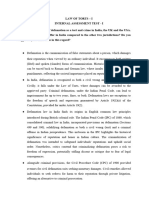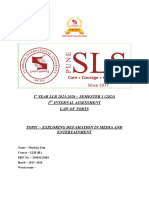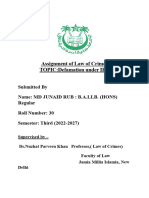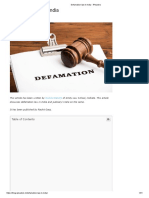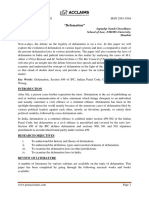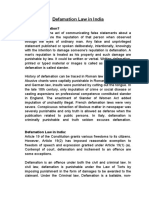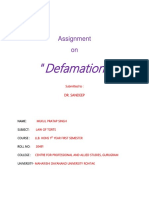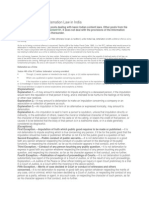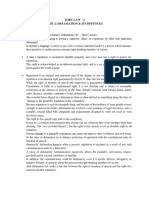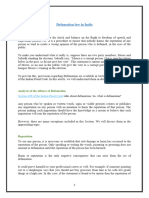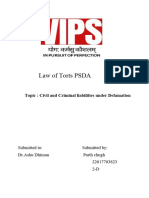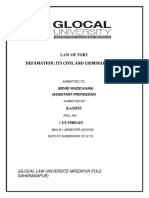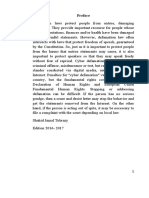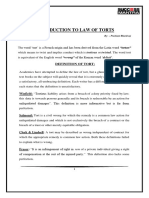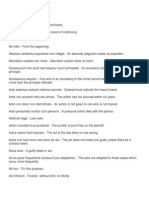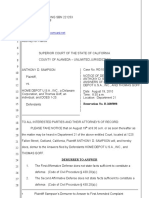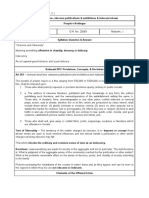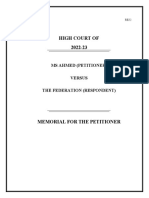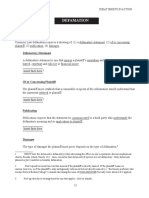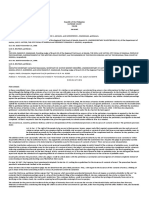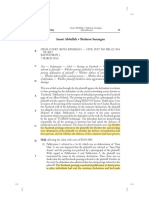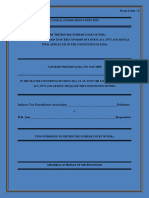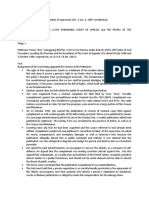0% found this document useful (0 votes)
56 views12 pagesDefamation Dynamics
The document discusses how defamation laws have changed with the rise of digital communication and social media. It examines key aspects of defamation like false comments, damage to reputation, and differences in laws globally. It also discusses balancing freedom of speech with protecting reputations, and how courts struggle with this. The document provides a comprehensive analysis of defamation law in India.
Uploaded by
sravikapavan.mCopyright
© © All Rights Reserved
We take content rights seriously. If you suspect this is your content, claim it here.
Available Formats
Download as PDF, TXT or read online on Scribd
0% found this document useful (0 votes)
56 views12 pagesDefamation Dynamics
The document discusses how defamation laws have changed with the rise of digital communication and social media. It examines key aspects of defamation like false comments, damage to reputation, and differences in laws globally. It also discusses balancing freedom of speech with protecting reputations, and how courts struggle with this. The document provides a comprehensive analysis of defamation law in India.
Uploaded by
sravikapavan.mCopyright
© © All Rights Reserved
We take content rights seriously. If you suspect this is your content, claim it here.
Available Formats
Download as PDF, TXT or read online on Scribd
/ 12




